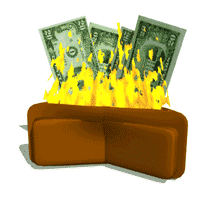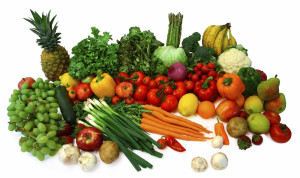The Way To Fight Rising Food Prices
The Way To Fight Rising Food Prices
Food, clothing and shelter generally top the list of basic human needs. While shopping at a discount store, instead of the mall, generally takes care of the clothing issue and living in a small apartment, instead of a McMansion, can address your housing situation, rising world food prices can lead to some significant challenges in the food department. Everything from rising transportation costs to the development of biofuels, such as biodiesel, push up the cost of food and put a pinch on consumers’ wallets. While the need to eat isn’t something you can avoid, there are some steps you can take to keep the costs in check.
Eat at Home
Dining out is an expensive proposition. Just about any nutritious meal that you buy in a formal restaurant, can be made at home for a fraction of the price. Even good coffee is cheaper to make, if you do it yourself. Fast food is excluded from the category; while high-calorie, low-quality food can be had at a bargain price, the impact on your long-term health overrides the benefit of short-term savings. (If you love restaurants, try investing in them instead of eating at them.
Shop with a Plan
If you stumble around the grocery store and fill your cart with everything that catches your eye, chances are you will spend a lot more money than you needed to spend. To minimize your cash outlay, prepare a shopping list before you leave home. Plan your meals for the week ahead, and make careful note of what you need to buy, in order to prepare those meals. Once the list is made, purchase only the items on the list and avoid impulse buys. (Learn how to create a budget.
Put on Blinders
Grocery stores are designed to make you go through a maze to get to the most basic items you need, in the hope that you will make a few impulse buys along the way. If you keep to your planned list of needed foods, you won’t be tempted when you get forced down the junk food aisle to get at the milk. Most necessities and basic cooking items are found along the outside perimeter of the store, so start there and work your way around the edge of the store, only stepping into the maze to grab any leftover items on your list.
Eat Before You Shop
When you are hungry and you walk into a building full of food, there’s a high likelihood that you are going to fill your cart with unnecessary and expensive purchases that appeal more to your taste buds, than your budget. To keep your costs down, eat first and shop on a full stomach.
Avoid Prepared Foods
Our fast-paced society encourages convenience and the grocery store has capitalized on this trend. Ready-made meals are easy to buy, but come with a premium price tag. Instead of putting that rotisserie chicken and macaroni salad in your cart, buy the ingredients and prepare the meal yourself. The same concept applies to frozen entrées, baked goods and any other food that has been prepared in some way, for added convenience.
Skip the Bottled Water
If you don’t like the water that comes out of the tap, buy a water filter. The per-gallon cost is significantly less than the cost of bottled water and without all the plastic bottles to discard, it’s a lot easier on the environment.
Shop Without the Kids
Hungry, tired and cranky kids increase the amount of time it takes to get your shopping done. Every extra minute that you spend in the grocery store, increases the likelihood of extra items finding their way into your cart, including toys and snacks designed to keep the kids quiet, while you try to focus on finding a few bargains.
Buy in Bulk
Bulk buying can save you a significant amount of money. Pay attention to the prices and pick up the family size package, if the per-unit cost is lower and you have a place to store it. Shopping at big-box bulk retailers, like Sam’s Club and Costco, can also save on your bill, if you shop there frequently enough to cover the cost of membership. However, pay careful attention to your spending habits. The big boxes are often no bargain at all, when compared to sales prices and coupon savings at other stores. In addition, they may encourage you to buy more than you need, driving up your grocery bill.(Bulk purchases aren’t for everyone.
Use Store Reward Cards
If the store that you visit most frequently has a reward card, be sure to sign up. In some cases, stores raise their prices when they offer reward cards and without the card your bill will certainly be higher. If the reward card offers other benefits, such as a ham for the holidays or a discount on gasoline, be sure to maximize your benefits by paying attention to the cutoff dates and cashing in your points before they expire.
Use Coupons
Coupons provide an easy way to save money. Clip them and cash them in, paying particular attention to stores that double the value of manufacturers’ coupons. A number of websites also offer coupons exclusively and they are a great place to search for discounts on the items you have on your list. If you frequent a website of your favorite brands, they will often offer discounts to their faithful public. A few minutes of surfing online can make a difference at the till.
Buy Locally
Locally grown or produced food is often available at a cheaper price, because you don’t pay for long transportation costs. Farmer’s markets, fairs and the local aisle at your grocery store, are all game for deals on tasty and fresh food.
Look Down
Stores often place the most expensive items at eye-level. To find less expensive items, look down. Also, looking around your brand-name food can find you a cheaper generic alternative. Generic label products are often nearly identical to name-brand goods and are often produced in the same factory, so don’t pay for packaging when what you really want is the food inside.
Avoid the End Caps and Checkout Temptations
Those displays placed at the end of each aisle often feature premium brands. Rather than grabbing those high-priced batteries or that extra box of cereal, walk down the aisle. Chances are good that walking a few extra feet will reward you with a less expensive option. Many grocery stores now offer checkout lines that don’t feature candy. Using these lanes not only helps you avoid the temptation to spend your money on sweets, but it also encourages a healthier lifestyle.
Compare Prices and Stores
Some consumers have trouble calculating the cost per unit in their heads, but it’s  something that gets a lot easier with practice; you can even carry a calculator. Looking at the brands and comparing prices is an easy way to shave a few cents off most purchases. The store that features the lowest average prices in your area is often the best place for routine shopping, but the higher-priced competitor may run sales on specific items that undercut the cost at your most frequented venue. Watch for these sales and take advantage of them when possible.
something that gets a lot easier with practice; you can even carry a calculator. Looking at the brands and comparing prices is an easy way to shave a few cents off most purchases. The store that features the lowest average prices in your area is often the best place for routine shopping, but the higher-priced competitor may run sales on specific items that undercut the cost at your most frequented venue. Watch for these sales and take advantage of them when possible.
Shop for Sales
As mentioned above, sales can be a great incentive to switch stores, but only if you need the items on sale. Pay attention to sales on necessity items and stock up on non-perishables and freezer goods. Keep an eye on the prices, so that you know when a sale price is merely a small savings or when it is a significant discount to the normal price.
Watch “Best Before” or “Sell By” Dates
As the “sell by” or “best before” date approaches, you are virtually guaranteed a discount. For example, grocery stores lower prices as meat ages, so ask the butcher when the meats get marked down. Most stores have a fairly regular schedule that you can learn and follow. When you get a good deal, stock your freezer so you can avoid buying when the price is high. If you plan on freezing the food, “best before” dates shouldn’t worry you; the product will stay fresh until you thaw and cook it.
Substitute Recipe Items
If you have a higher-priced item that reoccurs in your favorite recipes, it may be time to shake up your taste buds; often a lower-priced alternative can be found. For instance, if you consistently bake with olive oil and you see that the price has skyrocketed, a simple switch to applesauce, something that you might even be able to make if you have an apple tree, is a great cheap and low-fat substitution, for many recipes.
Keep Your Kitchen Stocked
A well-stocked kitchen means that you won’t run out of staple items and need to buy them on the spur or the moment. Knowing what you have in the cabinet, means that you can wait to make your purchases until items are on sale.
Shop Infrequently
Reducing the number of trips that you make to the store each week or month, reduces the odds of unnecessary purchases and minimizes the amount of gasoline spent getting there.
Pay Attention to Time
Weekly sales often run from mid-week to mid-week. Hold off on your shopping until after you’ve had a chance to clip coupons from the Sunday paper and you’ll not only enjoy the sales prices, but you might also get a coupon. Shopping during the evening or early morning also helps you avoid the crowds and spend less time in the store.
Pay in Cash
When you put groceries on your credit card and don’t pay off the card in full each month, you pay interest on the purchase. To avoid this extra cost, pay in cash when you shop and keep necessities off your credit cards.
Check Your Bill
Electronic scanners make the shopping experience faster and more convenient, but scanners aren’t perfect. Be sure to take a look at the receipt to make sure your coupons and discounts were taken into account.
The Bottom Line
Food is one of those purchases that you just can’t avoid, but careful shoppers can minimize the amount spent on this necessary purchase. All it takes is a little time, patience and effort.

